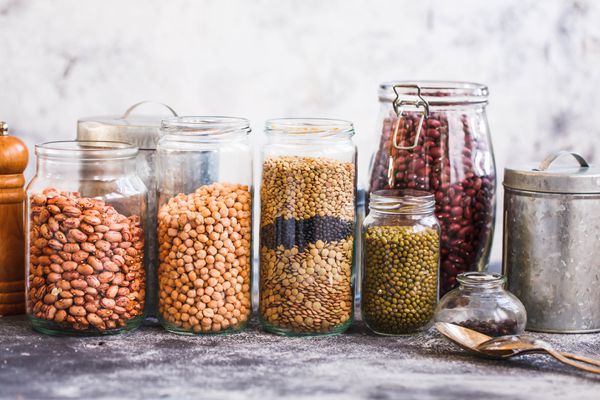This summer, whether you’re throwing a backyard barbecue, a picnic, or a restaurant patio dinner, put Canada on your menu with these locally grown and produced nutritious foods.
While many ingredients are available across the country, each region produces its own unique local foods. Here’s a snapshot (it’s not inclusive) of Canadian foods to celebrate and savor from coast to coast to coast.
Salmon is rich in nutrients. Six ounces of grilled sockeye salmon serves up 44 grams of protein, three days of vitamin B12 (7.6 mcg), a full day of selenium (60 mcg), and 1040 IU of vitamin D, along with plenty of potassium and choline, a nutrient that regulates memory and mood.DAVID MALOSH/The New York Times News Service
British Columbia
I’ll start with British Columbia, where I was born, raised, and raised eating sockeye salmon fresh from the Pacific Ocean. What I didn’t realize until I was studying nutrition at the University of British Columbia was that even the delicious salmon I enjoyed at family dinners was packed with nutrients.
Six ounces of grilled sockeye salmon serves up 44 grams of protein, three days of vitamin B12 (7.6 mcg), a full day of selenium (60 mcg), and 1040 IU of vitamin D, along with plenty of potassium and choline, a nutrient that regulates memory and mood.
For dessert, serve apricot bars made with fresh fruit picked from an Okanagan Valley orchard. Or, for something decadent, enjoy Nanaimo’s bars named after the city of Nanaimo on Vancouver Island.
Alberta
If you’re partying in Alberta, add a whole-grain barley-based salad to your menu. Barley is Canada’s third crop (after wheat and canola), of which Alberta produces the most.
One cup of cooked hulled barley, the whole-wheat version with its bran layer intact, has eight grams of protein, 10 grams of fiber, and 81 milligrams of blood sugar-regulating magnesium (adults need 400 mg per day). . Pearl barley, the most common type, has had the bran layer removed; it is still nutritious but a little less than hulled barley.

Saskatchewan is the world’s largest exporter of lentils, a nutritious legume. One cup provides 18 grams of plant protein.iStockPhotos/Getty Images
Saskatchewan
In Saskatchewan, feature lentils as one of your dishes. This province produces the majority of Canada’s lentils and is the world’s largest exporter of this nutritious legume.
One cup of lentils provides 18 grams of plant protein (the equivalent of three large eggs) and 15 grams of fiber. It’s also an outstanding source of folate, a B vitamin linked to a lower risk of colon cancer, and magnesium and potassium, minerals that help keep blood pressure in check.
Manitoba
One of Manitoba’s culinary gifts is wild rice, an aquatic grass seed that grows naturally in the province’s northern lakes and streams.
Add this nutty-flavored rice to a salad or whole-grain pilaf, or serve it as breakfast porridge. It is a good source of protein, fiber, B vitamins, magnesium, potassium and zinc.
Ontario
Ontario is known for sweet corn, a seasonal summer staple from July to September. And it’s more nutritious than many people think. Sweet corn offers low-GI carbohydrates, protein, prebiotic fiber that feeds good gut bacteria, niacin, folate, vitamin C, magnesium, and potassium.
Other foods to celebrate include peaches from the Niagara region (80 percent of the country’s peaches are grown there) and, of course, butter tarts.

Wild blueberries are smaller and sweeter in taste than cultivated blueberries and are high in anthocyanins.Robert F. Bukaty/Associated Press
Quebec
While poutine, Montreal-style bagels, and Oka cheese come to mind, today I thank Quebec for its wild (lowbush) blueberries, a treat I look forward to every July. (Wild blueberries are also grown in the Atlantic provinces.)
Smaller and sweeter in taste than cultivated blueberries, wild blueberries are rich in anthocyanins, highly concentrated antioxidants in the skin of the berries that are believed to protect against cardiovascular disease and boost brain health.
Wild blueberries contain more antioxidants than their cultivated cousins because, pound for pound, they contain more husk.
Prince Edward Island
Moving east to Atlantic Canada, now is the time to enjoy mussels, oysters and clams, excellent sources of protein, vitamin B12, zinc and selenium. Serve them with a potato salad made with potatoes grown on Prince Edward Island. (PEI is Canada’s largest potato-producing province.)
If you’re craving a snack, try dried dulse, an edible red seaweed harvested in the Bay of Fundy. It is a good source of B vitamins, iron, potassium and iodine.
The territories
We have Canada’s Nunavut, Yukon, and Northwest Territories to thank for arctic char, a fish that tastes milder than salmon but still has plenty of heart-healthy omega-3 fatty acids. The territories are the main suppliers of wild and farmed char.
Leslie Beck, a Toronto-based private dietitian.
#nutritious #homemade #foods #eat #Canada #Day
Image Source : www.theglobeandmail.com